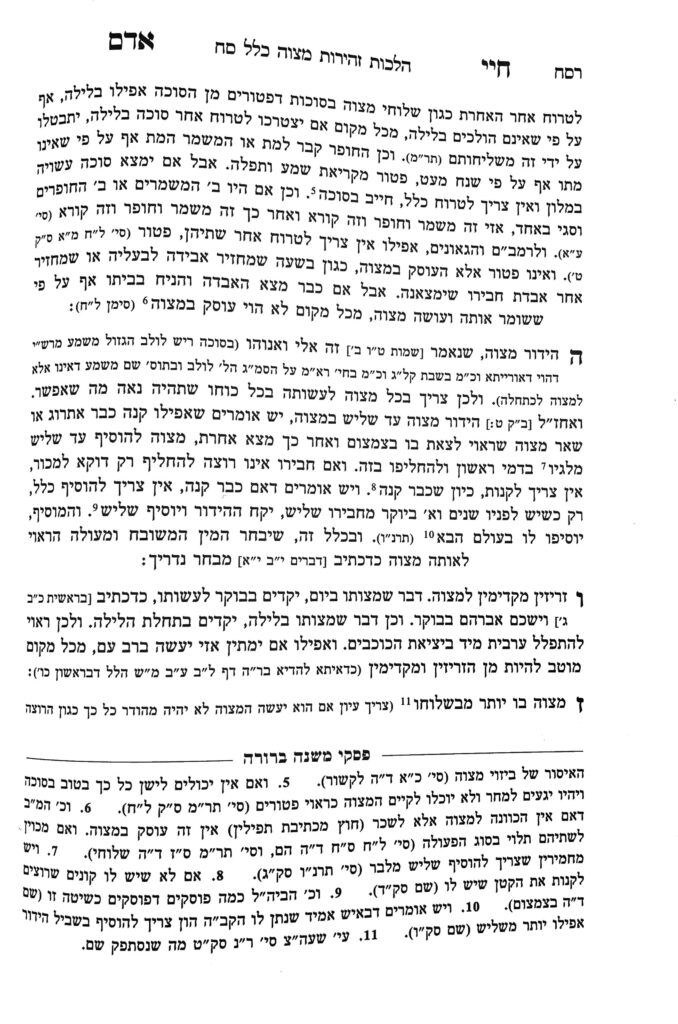We are continuing in siman 5, discussing the concept of hiddur mitzvah. We learned that there is a machlokes about how to understand the Gemara which teaches us that one must spend up to one third on hiddur mitzvah. Rashi understands that it refers to one third more expensive, while Tosfos understands that it refers to one third larger.
The Chayei Adam writes that hiddur mitzvah ad shlish, spending up to a third for hiddur mitzvah, refers to a situation in which one purchases a mitzvah item and then finds another one which is nicer. One is chayav to spend up to one third of the original cost to exchange it for the nicer item.
The Chayei Adam discusses how the third is calculated. He writes that it is calculated milegav, which literally means “inside of it”. This term is used by the Gemara to refer to calculating the third by dividing the original number into three parts. In our example from yesterday, one would divide $50,000 by three, and add that amount to the total ($50,000 + $16,667=$66,667). The other method is referred to by the Gemara as milevar, “outside of it”. This refers to adding a number (half the original number) which will be a third of the final total. In our example, half of $50,000 is $25,000, which, when added to the original number, will end up being a third of the final total ($75,000). The Chayei Adam paskens that the third is calculated based on the first method, so one must add up to that number in order to switch to the nicer mitzvah item.
The Chayei Adam writes that if the seller will not switch the items, but is only willing to sell the new one in addition, the buyer is not chayav to do so. For example, if the buyer purchases an esrog for $50 and then sees a nicer esrog for $70, but the seller will not accept back the first esrog, the buyer is not chayav to spend an additional $70 to buy the nicer esrog.
The Chayei Adam writes that there is an opinion that adding a third only applies before one has made a purchase. However, if a person already purchased the item, they are not chayav to do anything. This opinion appears to be the opinion of Rashi, as we learned yesterday.
The Chayei Adam continues, and writes that if a person pays the extra, as they are supposed to, schar is added for them in olam haba. If a person goes beyond, and spends more than a third, they will get rewarded in this world as well, in addition to their reward in olam haba.
The Chayei Adam concludes by writing that when choosing a mitzvah item, one should not only choose an item based on size, but based on quality as well, similar to when one makes a neder to Hashem, they should fulfill it through the choicest item.
Summary
- The Chayei Adam understands that hiddur mitzvah refers to buying a nicer mitzvah item, where the cost is up to one third more than a cheaper equivalent.
- The Chayei Adam holds that the third is calculated by dividing the original number by three (milegav).
- If one has already purchased the cheaper item, and will not be able to exchange it but must pay full price for the nicer item, they are not chayav to pay for it (because it will end up costing them more than one third).
- When a person pays the extra, as they are supposed to, schar is added for them in olam haba. If a person spends more than a third, they will get rewarded in this world as well, in addition to their reward in olam haba.



